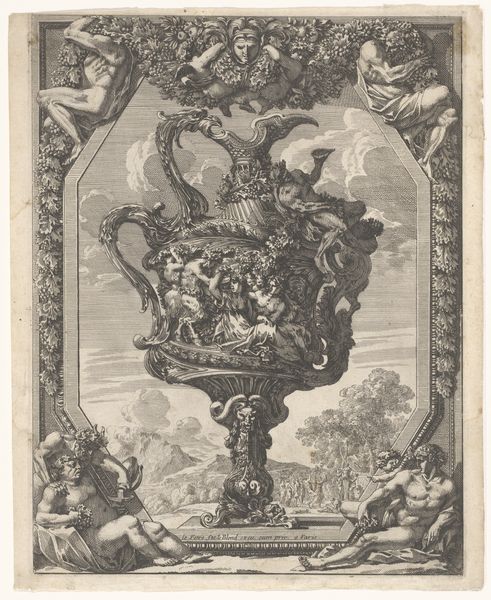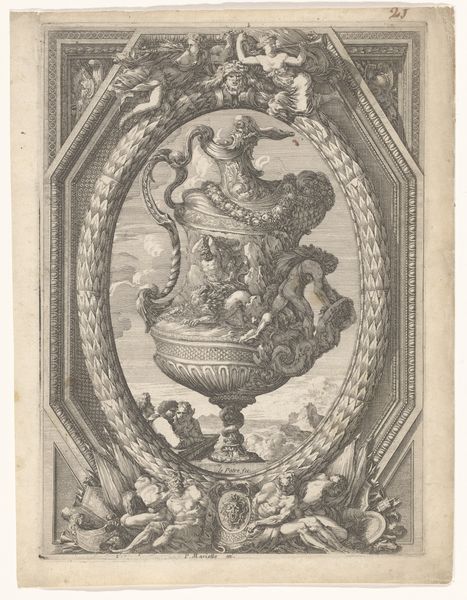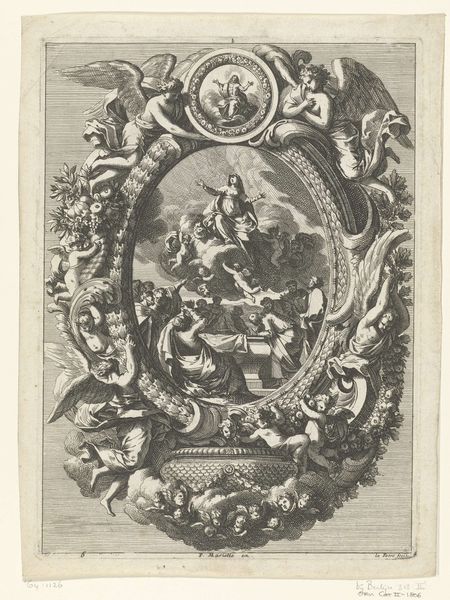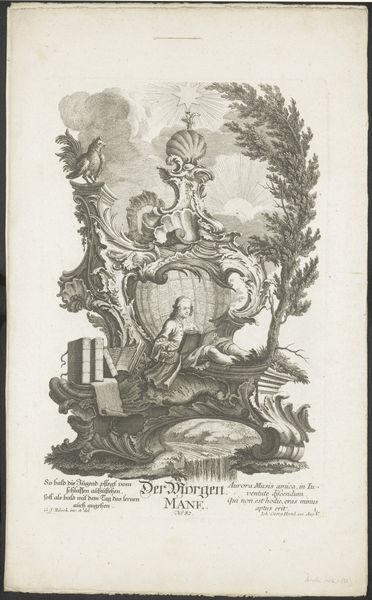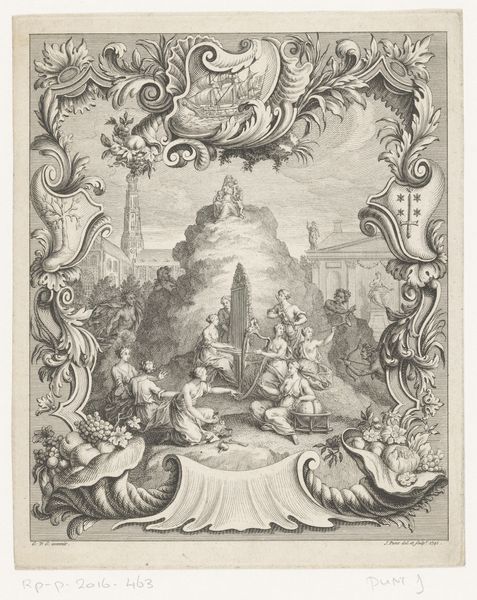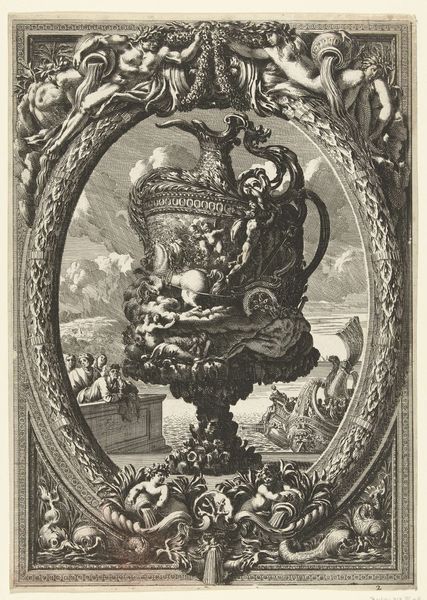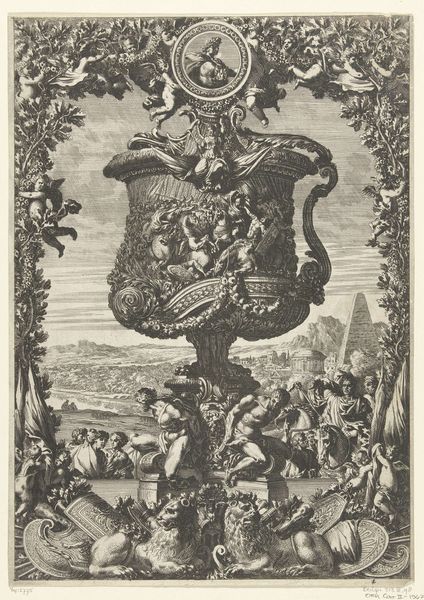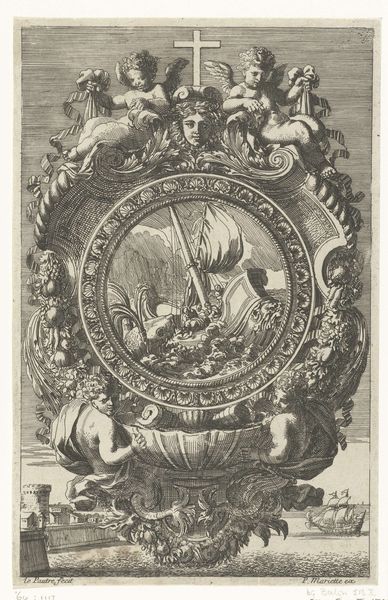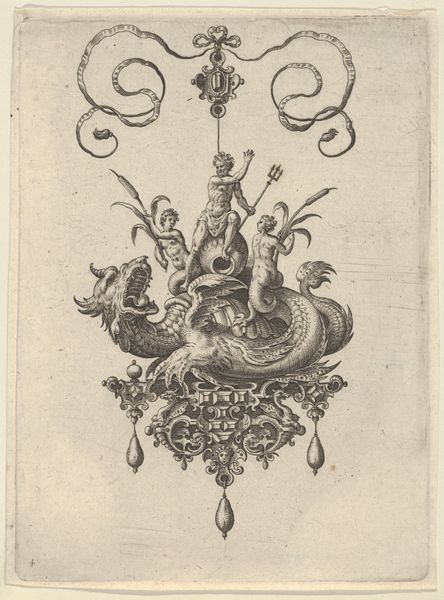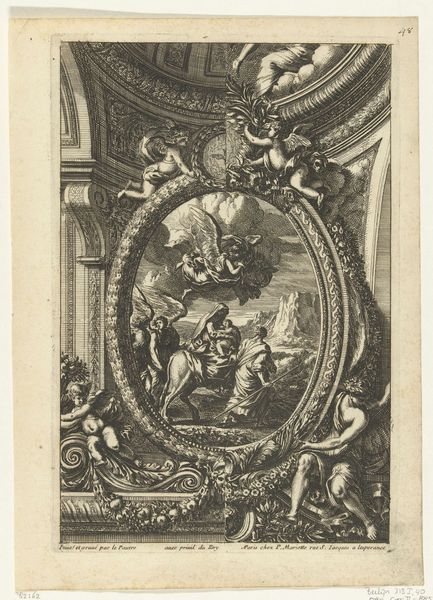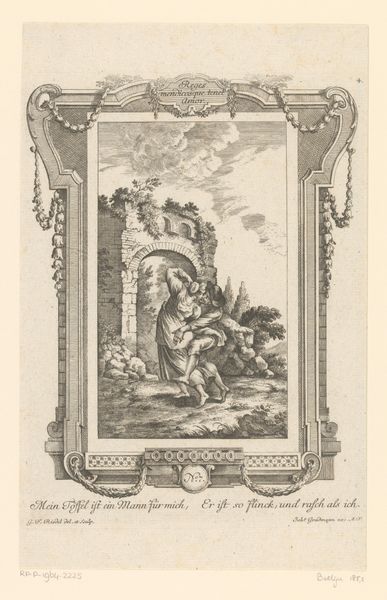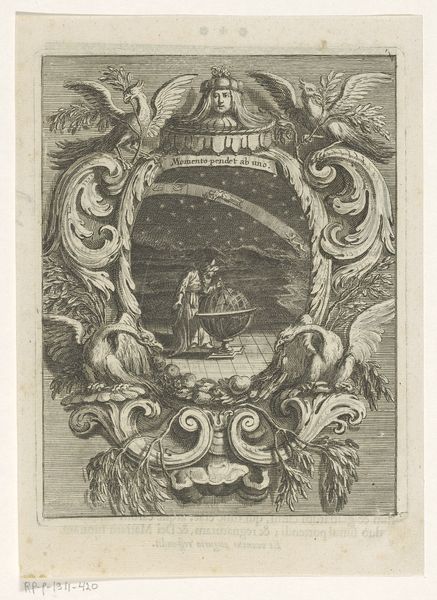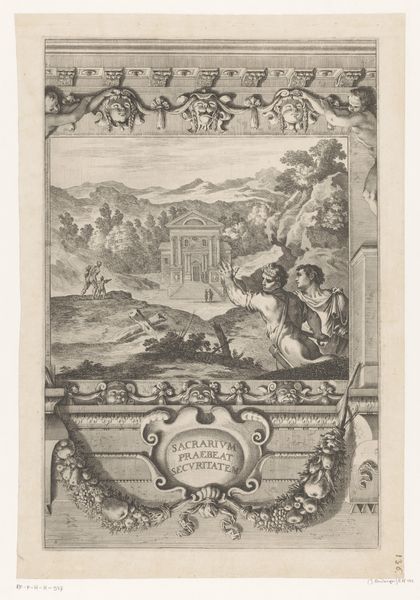
engraving
#
allegory
#
baroque
#
old engraving style
#
history-painting
#
decorative-art
#
engraving
Dimensions: height 285 mm, width 220 mm
Copyright: Rijks Museum: Open Domain
Editor: This is "Schenkkan rustend op drie dolfijnen," an engraving by Jean Lepautre, dating back to sometime between 1650 and 1664. I find it incredibly intricate. The nautical themes and decorative framing give it such a powerful sense of classical grandeur. How do you interpret the imagery used here? Curator: The entire image swims with symbols. Water, the sea, dolphins, even the bodies intertwined evoke constant flux, creation, and, importantly, power. Ask yourself, what does a container signify? Here, a 'Schenkkan,' literally a 'pouring vessel', teems with figures and life in the midst of chaos. It suggests a control of these natural forces or at least, a visual ordering of them. Editor: So, is the "Schenkkan" an emblem of dominance then, a visual representation of power over nature? Curator: Potentially, yes. Though the baroque love of elaborate detail adds to the dynamism, notice how the vessel itself rests on dolphins. The dolphin, throughout history, appears as a symbol of salvation and guidance. What feeling does this contrast between container and base evoke in you? Editor: I guess the contrast is really fascinating. The vessel, seemingly holding back chaos, is itself supported by figures promising safe passage, a hope for calm even amidst turmoil. I never really noticed it until now. Curator: Exactly. Baroque art uses symbolism like this. It’s about layering meaning and associations. It becomes not just a decorative print but a complex statement on power, nature, and maybe even hope. Editor: I see it now. Thank you; that’s given me a whole new appreciation for the symbolism at play here. Curator: And I believe I have fresh eyes to consider historical perception of power in the natural world.
Comments
No comments
Be the first to comment and join the conversation on the ultimate creative platform.

